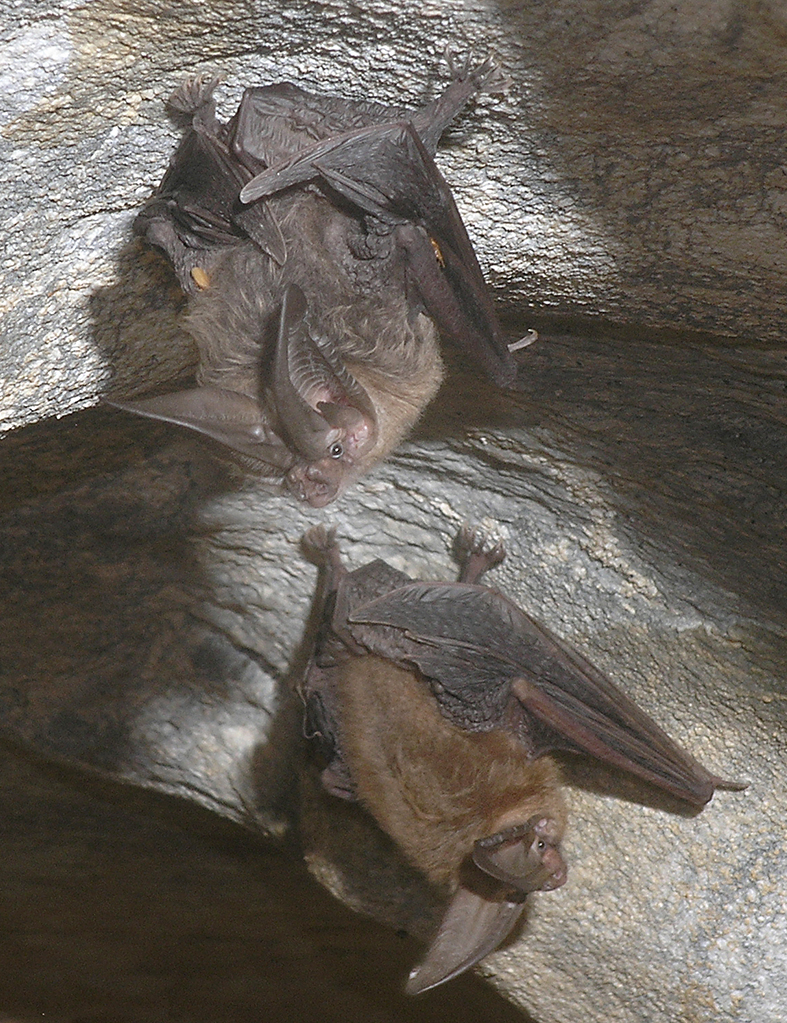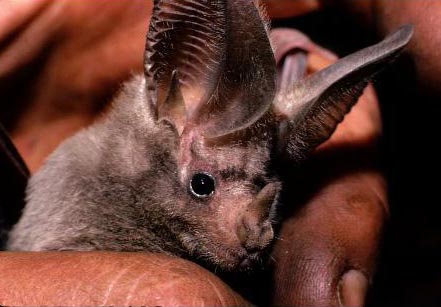|
Bats Of The United States
Most of the many bat species found in the United States are insectivorous except for three flower eating species that migrate from Mexico and one that inhabits the Florida Keys. __TOC__ Species Bats belong to the biological order of Chiroptera. The bat families found in North America are Vespertilionidae, Molossidae, Mormoopidae and Phyllostomidae. Molossidae * Florida bonneted bat ''Eumops floridanus'' * Wagner's bonneted bat ''Eumops glaucinis'' *Western mastiff bat ''Eumops perotis'' * Underwood's bonneted bat ''Eumops underwoodi'' *Velvety free-tailed bat ''Molossus molossus'' * Pocketed free-tailed bat ''Nyctinomops femorosaccus'' * Big free-tailed bat ''Nyctinomops macrotis'' *Mexican free-tailed bat ''Tadarida brasiliensis'' Mormoopidae *Ghost-faced bat ''Mormoops megalophylla'' Phyllostomidae *Jamaican fruit bat ''Artibeus jamaicensis'' (Florida Keys only) *Mexican long-tongued bat ''Choeronycteris mexicana'' *Mexican long-nosed bat ''Leptonycteris nivalis'' *Cali ... [...More Info...] [...Related Items...] OR: [Wikipedia] [Google] [Baidu] |
United States
The United States of America (U.S.A. or USA), commonly known as the United States (U.S. or US) or America, is a country primarily located in North America. It consists of 50 states, a federal district, five major unincorporated territories, nine Minor Outlying Islands, and 326 Indian reservations. The United States is also in free association with three Pacific Island sovereign states: the Federated States of Micronesia, the Marshall Islands, and the Republic of Palau. It is the world's third-largest country by both land and total area. It shares land borders with Canada to its north and with Mexico to its south and has maritime borders with the Bahamas, Cuba, Russia, and other nations. With a population of over 333 million, it is the most populous country in the Americas and the third most populous in the world. The national capital of the United States is Washington, D.C. and its most populous city and principal financial center is New York City. Paleo-Americ ... [...More Info...] [...Related Items...] OR: [Wikipedia] [Google] [Baidu] |
Mexican Free-tailed Bat
The Mexican free-tailed bat or Brazilian free-tailed bat (''Tadarida brasiliensis'') is a medium-sized bat native to the Americas, so named because its tail can be almost half its total length and is not attached to its uropatagium. It has been claimed to have the fastest horizontal speed of any animal, reaching top ground speeds over . It also flies the highest among bats, at altitudes around . It is regarded as one of the most abundant mammals in North America. Its proclivity towards roosting in huge numbers at relatively few locations makes it vulnerable to habitat destruction in spite of its abundance. For instance, up to 1.5 million bats reside under just one bridge in Austin. The Texas Legislature designated the Mexican free-tailed bat the state mammal (flying) in 1995. The bat is considered a species of special concern in California as a result of declining populations. Taxonomy The Mexican free-tailed bat was described as a new species in 1824 by French zoologist Isi ... [...More Info...] [...Related Items...] OR: [Wikipedia] [Google] [Baidu] |
Western Red Bat
The western red bat or desert red bat (''Lasiurus frantzii'') is a species of microbat in the family Vespertilionidae. It is found in western North America and Central America. Taxonomy Previously, it was believed to be a subspecies of the southern red bat (''Lasiurus blossevillii''), and was called ''Lasiurus blossevillii teliotis'' (abbreviated ''L. b. teliotis''). The western red bat is also very similar to the eastern red bat and is distinguished from each other by minor differences, such as the lack of white-tipped hair in the dorsal pelage in the western red bat and the presence of sparse fur in the lower third of their tail. Their habitats are separated by the Rocky Mountains and may overlap. Distribution and habitat The western red bat is found across western North America, ranging from southern Canada, through the western United States, down to Central America. The species has been recorded in Belize, Canada, Costa Rica, El Salvador, Guatemala, Honduras, Mexico, N ... [...More Info...] [...Related Items...] OR: [Wikipedia] [Google] [Baidu] |
Silver-haired Bat
The silver-haired bat (''Lasionycteris noctivagans'') is a solitary migratory species of vesper bat in the family Vespertilionidae and the only member of the genus ''Lasionycteris''. Etymology The species name translates as night-wandering, referring to the nocturnal behavior of bats. Description This medium-sized bat is predominantly black (including the wings, ears, interfemoral membrane, and fur) with white-tipped hairs. The basal upper half of its tail membrane is densely furred. This gives the bat a frosted appearance and its common name's sake. This species has a flattened skull with a broad rostrum. This species weighs around 8–12 g, has a total length of ~100 mm, a tail length of 40 mm, and a forearm length of 37–44 mm. Distribution and habitat ''Lasionycteris noctivagans'' is found in Bermuda, Canada, Mexico, and the United States. This forest inhabitant is known to occur from southeastern Alaska in summer to northeastern Mexico in winter and is fo ... [...More Info...] [...Related Items...] OR: [Wikipedia] [Google] [Baidu] |
Allen's Big-eared Bat
Allen's big-eared bat (''Idionycteris phyllotis'') is a species of vesper bat in the monotypic genus ''Idionycteris''. It occurs in Mexico and in Arizona, California, Nevada, New Mexico, Utah, and ColoradoHayes, M. A., et al. (2009)Allen's big-eared bat (''Idionycteris phyllotis'') documented in Colorado based on recordings of its distinctive echolocation call. ''The Southwestern Naturalist'' 54(4), 499–501. in the United States. Description Idionycteris is a bat with large ears, weighing 8 to 16 grams. On the dorsal side they possess long and soft pelage, also referred to as fur. Their fur is basally blackish in color with tips that are a yellow-gray color. Idionycteris, has a black patch on each shoulder, a tuft of white hair on the backside of the ears, as well as, ventral hairs that are black with pale tips. The calcar possesses a low keel. The uropatagium has 12 to 13 transverse ribs. The rostrum is flattened and broad. ''Idionycteris phyllotis'' has an external morphology ... [...More Info...] [...Related Items...] OR: [Wikipedia] [Google] [Baidu] |
Spotted Bat
The spotted bat (''Euderma maculatum'') is a species of vesper bat and the only species of the genus ''Euderma''. Description The spotted bat was first described by zoologist Joel Asaph Allen from the American Museum of Natural History in 1891. It can reach a length of 12 cm and a wingspan of 35 cm. The weight is about 15 g. It has three distinctive white spots on its black back. With ears that can grow up to 4 cm, it is said to have the largest ears of any bat species in North America. The spotted bat's mating season is in autumn and the females produce their offspring (usually one juvenile) in June or July. Its main diet is grasshoppers and moths. Habitat The habitats of the spotted bat are undisturbed roosts on cliffs along the Grand Canyon in Arizona, and open and dense deciduous and coniferous forests, hay fields, deserts, marshes, riparian areas, and dry shrub-steppe grasslands in Arizona, California, Colorado, Oregon, New Mexico, Utah, Washington, and Briti ... [...More Info...] [...Related Items...] OR: [Wikipedia] [Google] [Baidu] |
Big Brown Bat
The big brown bat (''Eptesicus fuscus'') is a species of vesper bat distributed widely throughout North America, the Caribbean, and the northern portion of South America. It was first described as a species in 1796. Compared to other microbats, the big brown bat is relatively large, weighing and possessing a wingspan of . Big brown bats are insectivorous, consuming a diverse array of insects, particularly night-flying insects, but especially beetles. Some of the beetles it consumes are serious agricultural pests, including cucumber beetles. They are nocturnal, foraging for prey at night and roosting in sheltered areas during the day such as caves, tunnels, tree cavities, and human structures. Their breeding season is in the fall, shortly before their annual hibernation. After hibernation ends in the spring, females form maternity colonies for giving birth to young. Oftentimes only one offspring is produced per litter, though twins are common in the Eastern US. Lifespans o ... [...More Info...] [...Related Items...] OR: [Wikipedia] [Google] [Baidu] |
Townsend's Big-eared Bat
Townsend's big-eared bat (''Corynorhinus townsendii'') is a species of vesper bat. Description Townsend's big-eared bat is a medium-sized bat (7-12 g)Townsend's Big-eared Bat (''Plecotus townsendii'') Nsrl.ttu.edu. Retrieved on 2010-11-05. with extremely long, flexible ears, and small yet noticeable lumps on each side of the snout. Its total length is around 10 cm (4 in.), its tail being around 5 cm (2 in) and its wingspan is about 28 cm (11 in). The dental formula of ''Corynorhinus townsendii'' is Range ''C. townsendii'' can be found in , |
Rafinesque's Big-eared Bat
Rafinesque's big-eared bat (''Corynorhinus rafinesquii''), sometimes known as the southeastern big-eared bat, is a species of vesper bat native to the southeastern United States. Description As its name implies, this species has ears over an inch long. The genus name ''Corynorhinus'' means "club-nosed". Similar to Townsend's big-eared bat, this species has two lumps on either side of its nose. Rafinesque's big-eared bat is a medium-sized bat with a length around and a wingspan of . These bats range in weight from . The bat is gray on the dorsal side and white on the underside. The ears and face are a pinkish-brown color, while the forearm and wing membrane are dark brown. Some sources report its maximum lifespan as 10 years, although robust data are lacking. More research has been done on the closely related Townsend's big-eared bat, and estimates for this species' lifespan range from 16 to 30 years in the wild. While uncommon throughout its range, this species is found in a v ... [...More Info...] [...Related Items...] OR: [Wikipedia] [Google] [Baidu] |
California Leaf-nosed Bat
The California leaf-nosed bat (''Macrotus californicus'') is a species of bat in the family Phyllostomidae. It is found in Mexico and the United States. Its natural habitat is hot deserts. Habitat California leaf-nosed bats can be found in Sonoran and Mojave Desert scrub habitats in the Colorado River valley in southern California, Nevada and Arizona, and throughout western Mexico. It is non-migratory and does not hibernate. Physical description The California leaf-nosed bat weighs between 12 and 20 grams, has a wingspan of over 30 centimeters and a body length of over 6 centimeters, and is brown in color. As its name implies, it has a triangular fleshy growth of skin, called a noseleaf, protruding above the nose. This bat is the only bat of the family Phyllostomidae in the United States to have large ears, usually over 2.5 centimeters. It is also one of the most maneuverable in flight. ''M. californicus'' seems to spread its uropatagium widely only when hovering or perfor ... [...More Info...] [...Related Items...] OR: [Wikipedia] [Google] [Baidu] |
Mexican Long-nosed Bat
The greater long-nosed bat or Mexican long-nosed bat (''Leptonycteris nivalis'') is a species of bat in the family Phyllostomidae. It is found in Mexico and the United States. It chiefly consumes pollen and nectar, particularly from agave plants and cacti. Its habitat includes desert scrub and open woodlands. It is threatened by habitat loss. Description They are sooty brown in color, with a darker dorsally and lighter ventrally. Individual hairs are white at the base, and silver at the tips. Their forearms are long.Baker, R. J., & Cockrum, E. L. (1966). Geographic and ecological range of the long-nosed bats, Leptonycteris. Journal of Mammalogy, 47(2), 329-331. They have moderately-furred interfemoral membranes, and their short tails only have three vertebrae.Hensley, A., Wilkins, K. 1988. Mammalian Species. The American Society of Mammalogists. 307(1-4). Their muzzles are elongated, and their tongues are long and tipped with filiform papillae. The tongue attaches at the post ... [...More Info...] [...Related Items...] OR: [Wikipedia] [Google] [Baidu] |
.jpg)



.jpg)
